Homemade Semolina Pasta Dough
I first learned to make this semolina pasta dough during a cooking class at the Anna Tasca Lanza school in Sicily. Their version included a touch of ricotta and Parmesan cheese, which I’ve kept in my recipe because it softens the dough and makes it easier to knead. After testing it many times at home, both with and without ricotta, I found this version gives the best texture — tender, not overly chewy, and easy to work with.
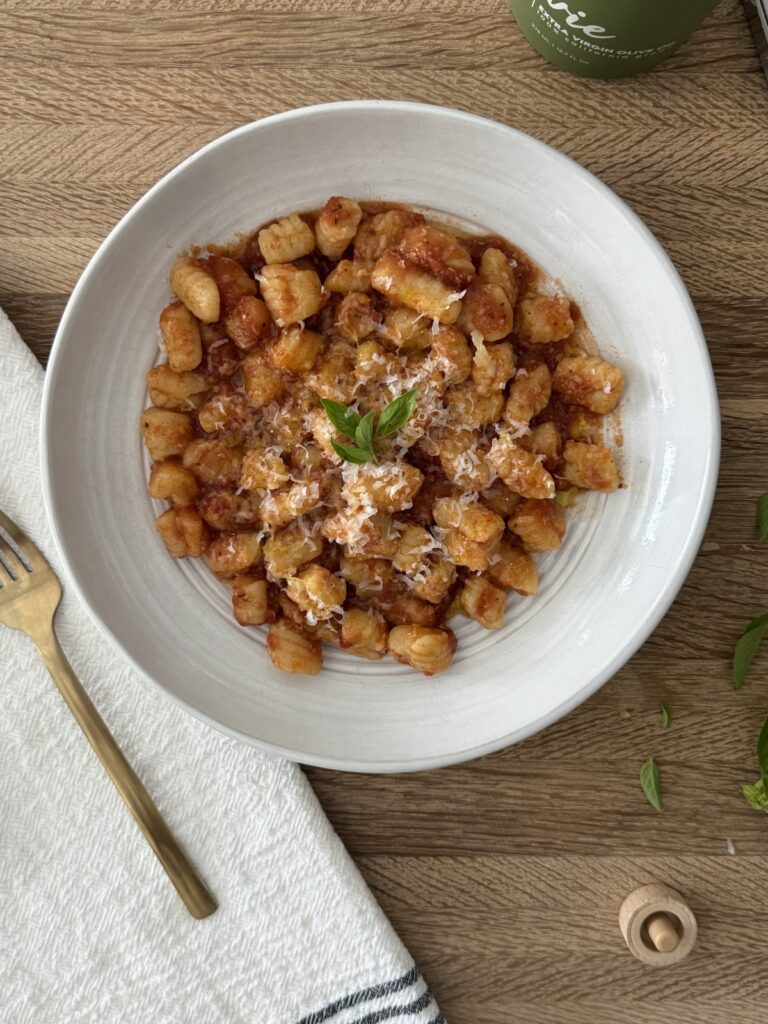
This semolina pasta dough is our homemade recipe for authentic Italian pasta, which comes together with minimal ingredients and is also great to prepare in advance. It’s a foolproof, restaurant-style pasta that you can shape multiple ways and pair with your favorite sauces.
Two of my favorite pairings are my Chicken Bolognese, a lighter twist on a classic meat sauce, and my Spaghetti with Lemon Cream Sauce, a bright and creamy dish that balances beautifully with this rustic pasta dough.
Table of Contents
Why You’ll Love This Recipe
- Simple ingredients. Just flour, water, Parmesan cheese, ricotta, and salt.
- Softened texture. I tested semolina dough both with and without ricotta, and I 100% prefer the version with ricotta. It makes the dough easier to knead and gives the pasta a tender bite instead of being overly dense or chewy.
- Flexible. Shape it into cavatelli or other rustic pastas like orecchiette or strozzapreti.
- Pairs with any sauce. From tomato to pesto, bolognese to cacio e pepe, this dough works with it all.
- Make ahead friendly. Shape and freeze for meal prep or entertaining — they cook from frozen in minutes.
- Family-friendly. Rolling and shaping the pasta is fun for kids and makes this recipe a great one to cook together.
Ingredients
- Fine durum wheat semolina flour – the base of this pasta dough, giving it a rustic, authentic texture.
- Parmesan cheese – finely grated, ideally a high-quality Parmesan from Italy, for flavor and richness.
- Ricotta cheese – just a small amount, strained, which softens the dough and makes it easier to knead.
- Salt – enhances the flavor of the dough.
- Water – added gradually until the dough comes together; the exact amount depends on humidity and flour.
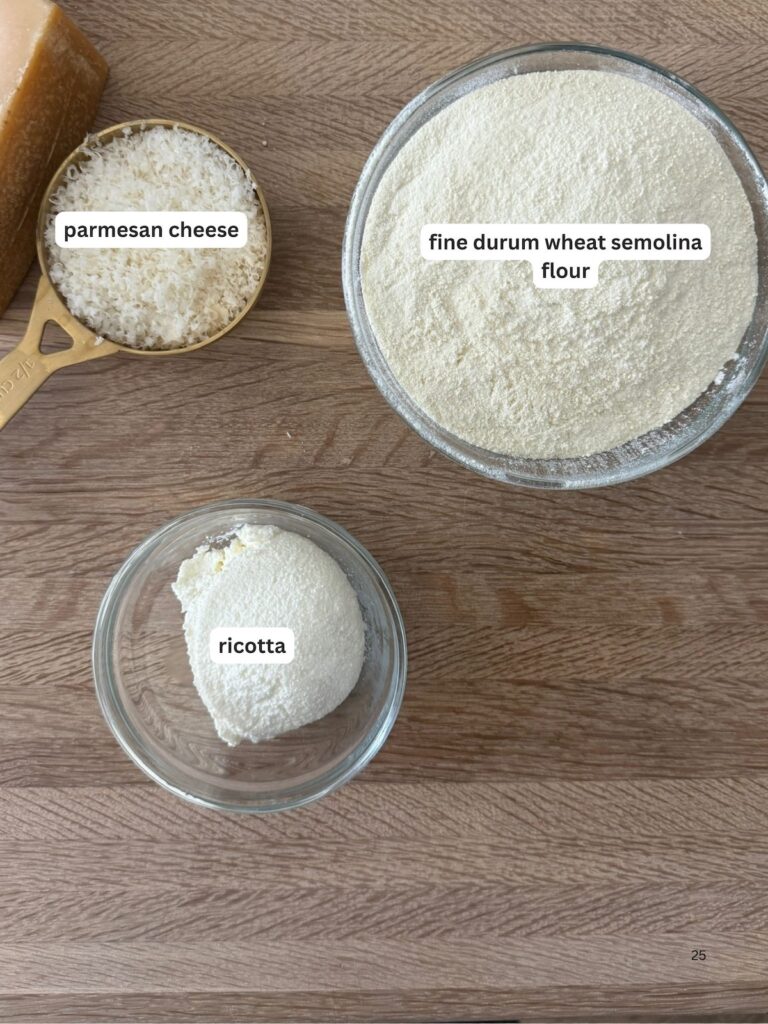
How to Make Semolina Pasta Dough
- In a large bowl, mix together the fine semolina flour, finely grated Parmesan cheese, and a pinch of salt until combined.
- Turn the mixture out onto a clean work surface, such as your countertop or a large cutting board. Shape it into a mound and make a well in the center. Add the ricotta to the well.
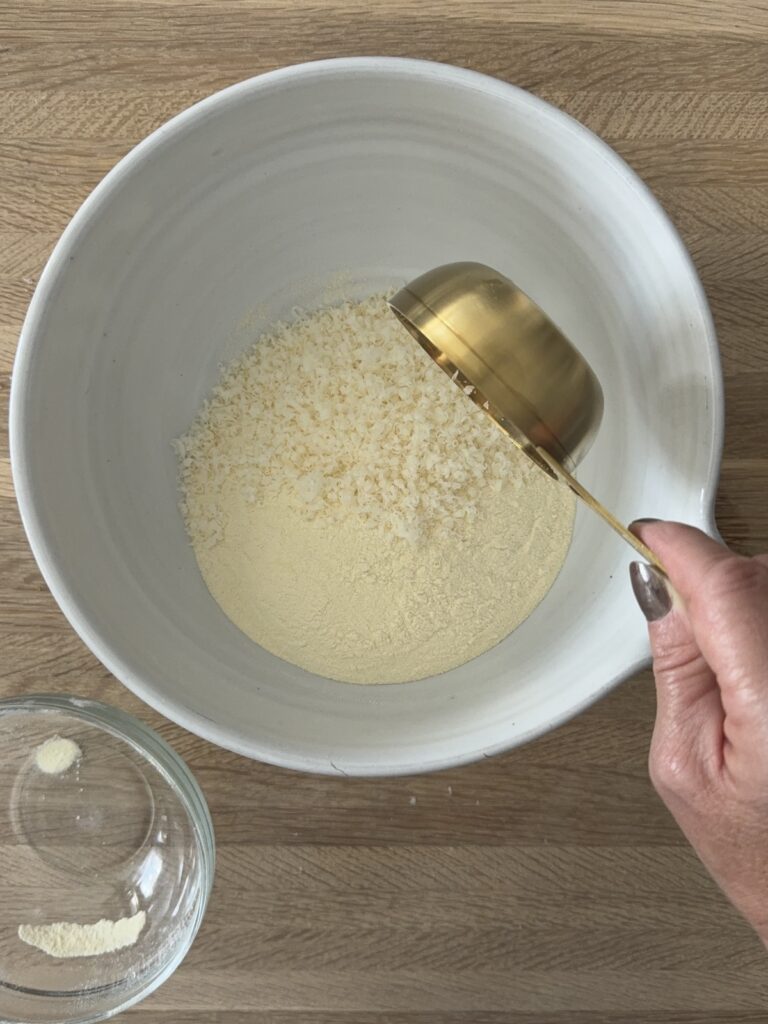
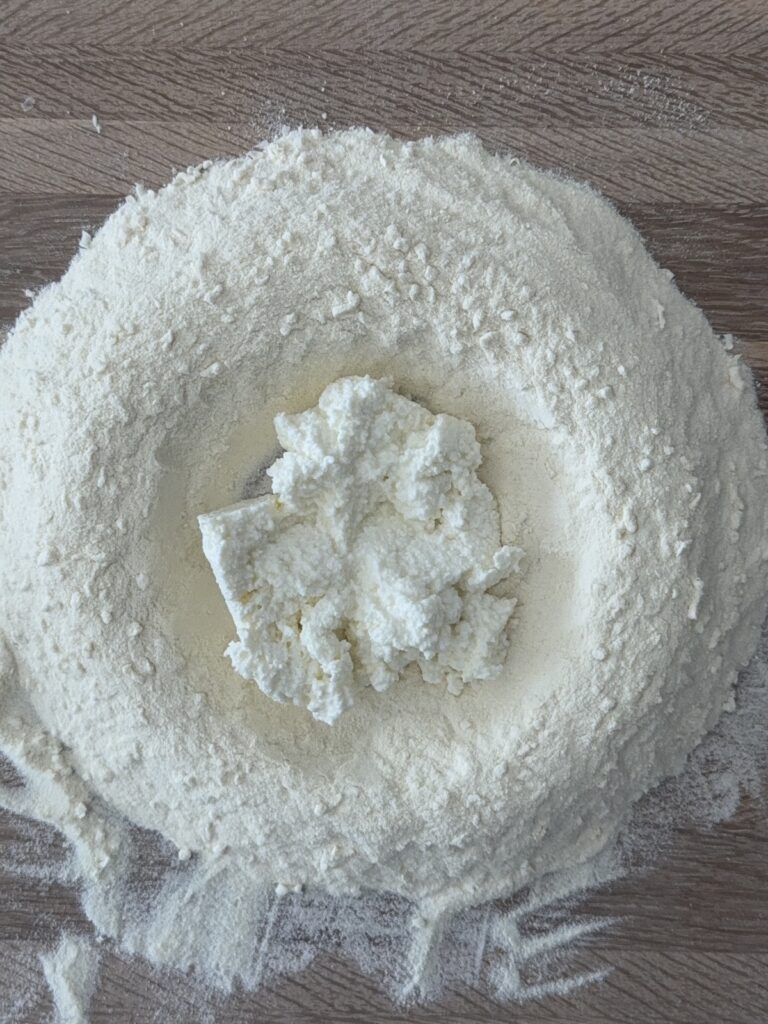
- Pour about one-third of the water into the well with the ricotta. Use a fork to begin pulling the flour into the center. Add more water a little at a time, only as needed, until the dough starts to come together. Once most of the flour is incorporated, use a bench scraper to cut and gather it into a shaggy, coarse dough. It will look dry at first — that’s normal.
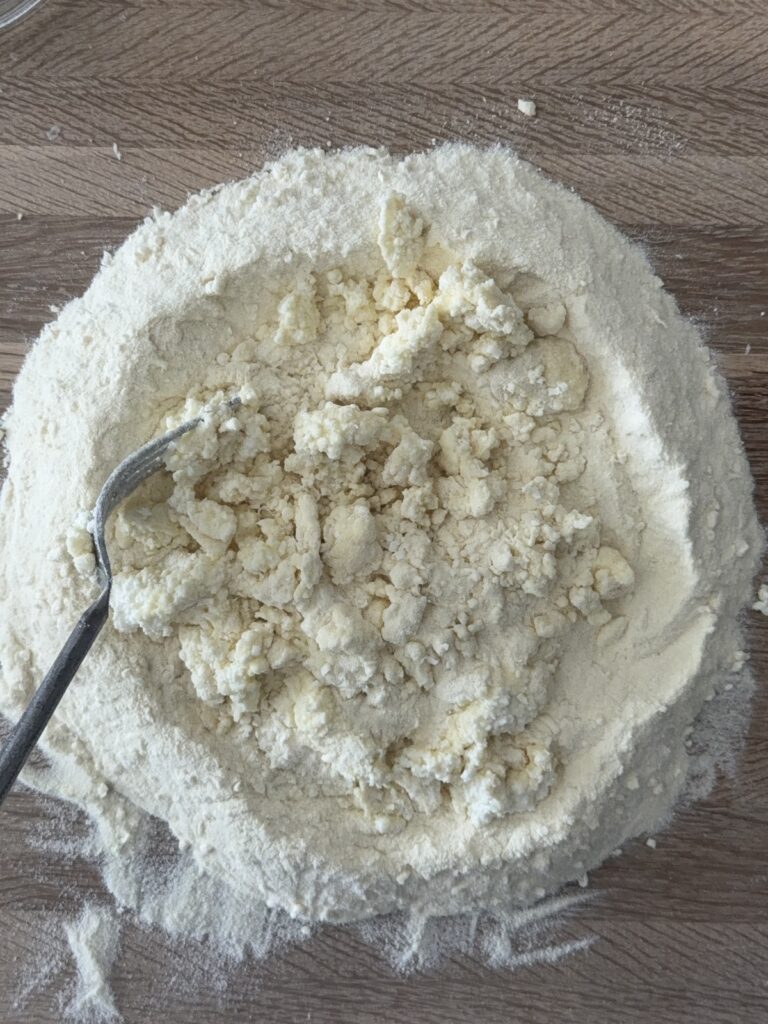
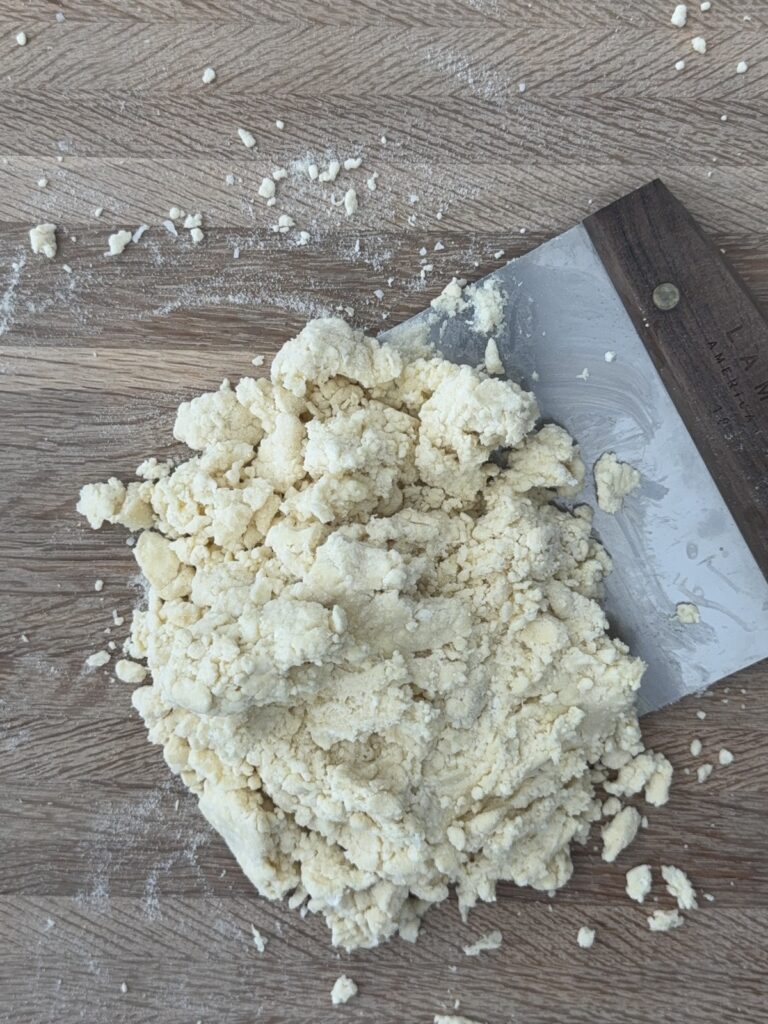
- Knead the dough on a lightly floured surface for 8–10 minutes, until smooth and elastic. The dough should not feel sticky.
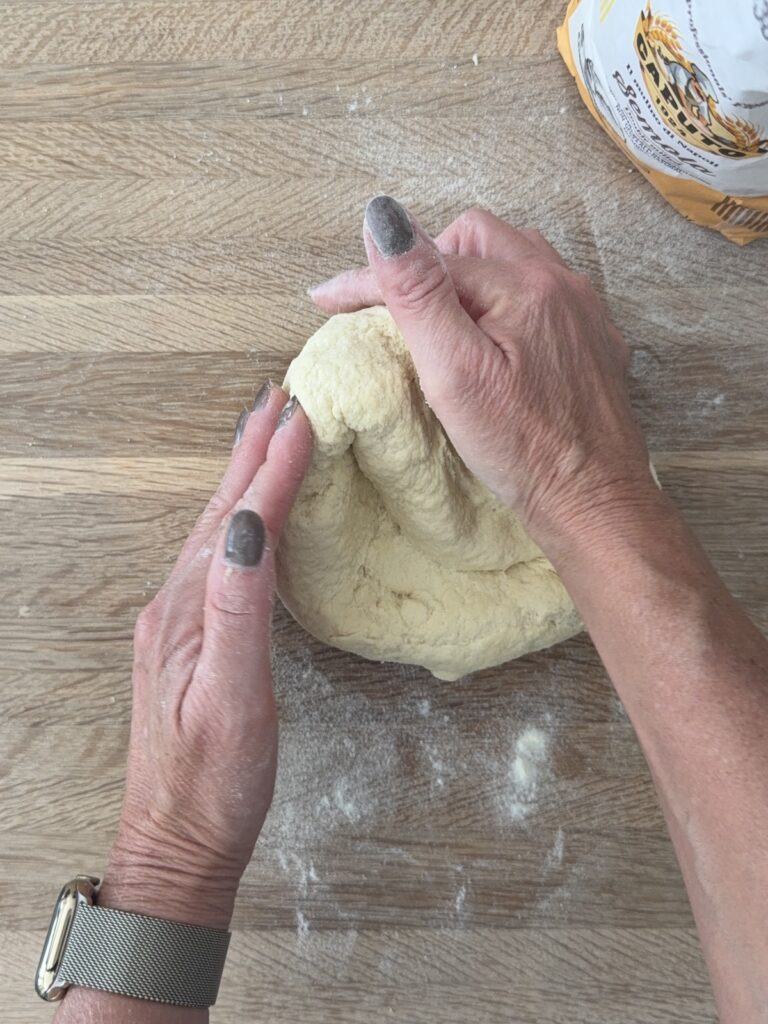
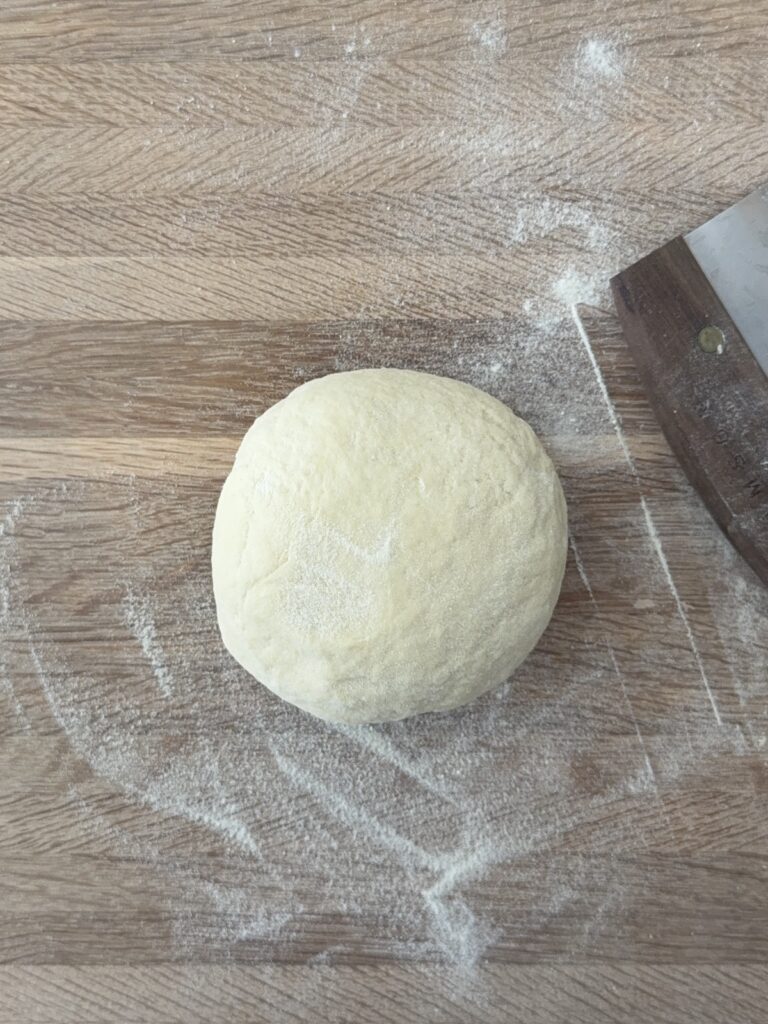
- Wrap the dough in plastic wrap and let it rest at room temperature for 30 minutes.
- Cut off a small piece of dough, keeping the rest wrapped so it doesn’t dry out. Roll the piece into a thin log, about ⅜ inch (9–10 mm) in diameter — roughly the width of your finger.
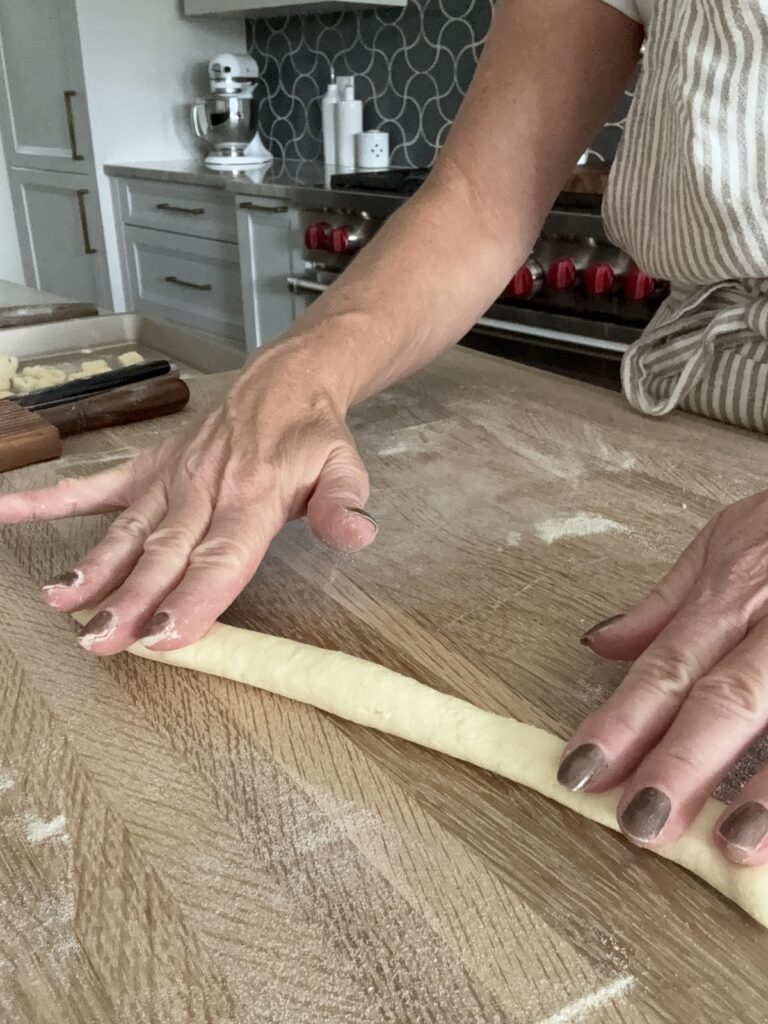
- Cut the log into small pieces about ½ inch (1.3 cm) long. Using a cavatelli board, fork, or machine, roll each piece into cavatelli. Place the shaped pasta on a tray dusted with semolina.
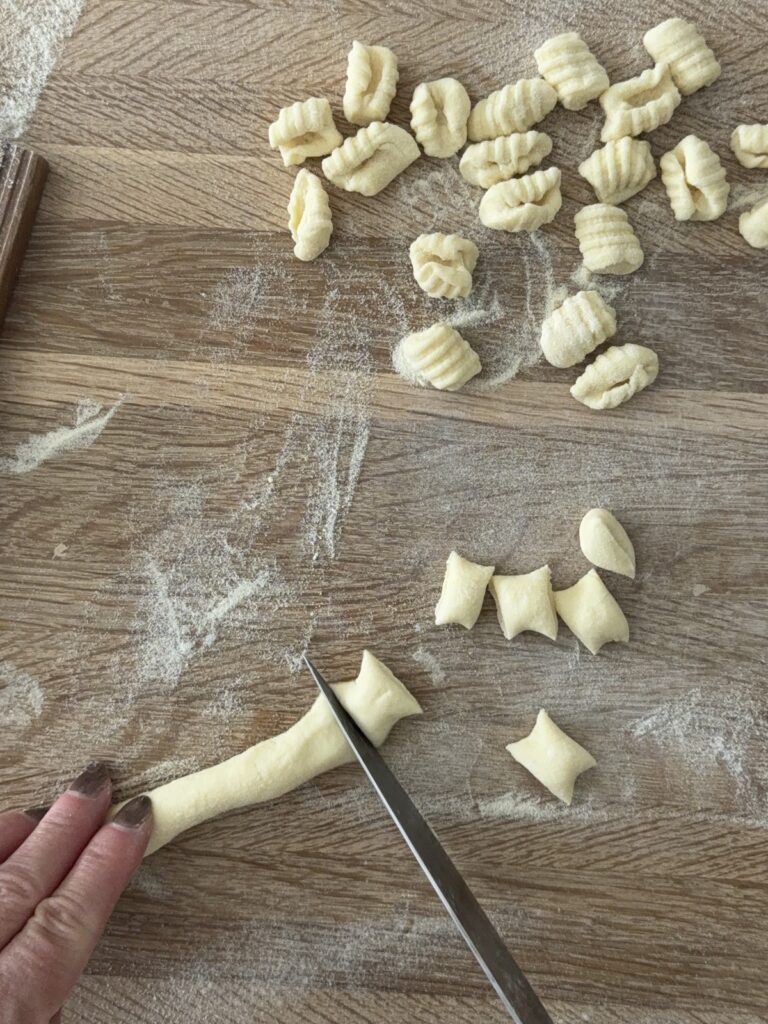
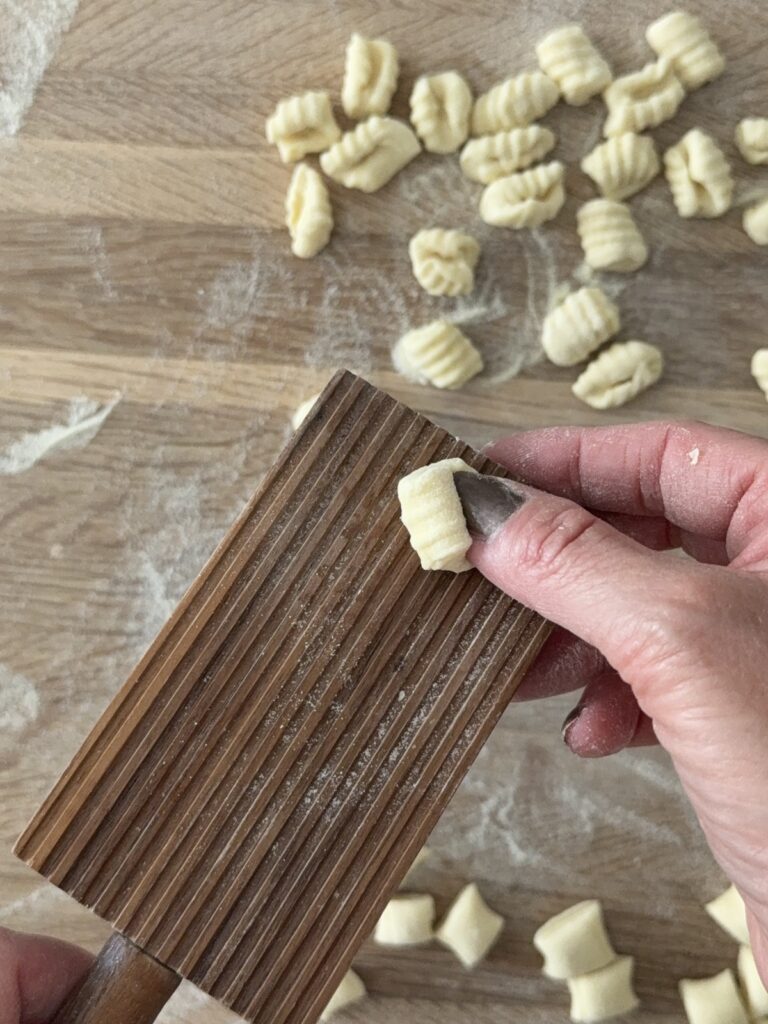
- At this stage, you can cook the pasta right away, refrigerate the shaped cavatelli for a few hours, or freeze them in a single layer for later. If cooking immediately, let the pasta sit out briefly while you bring a large pot of salted water to a boil.
- Add the cavatelli to the boiling water. Fresh pasta will cook in 2–3 minutes, while frozen pasta will take 4–5 minutes. The pasta is ready when it floats to the surface and is al dente. Drain and serve with your favorite sauce.
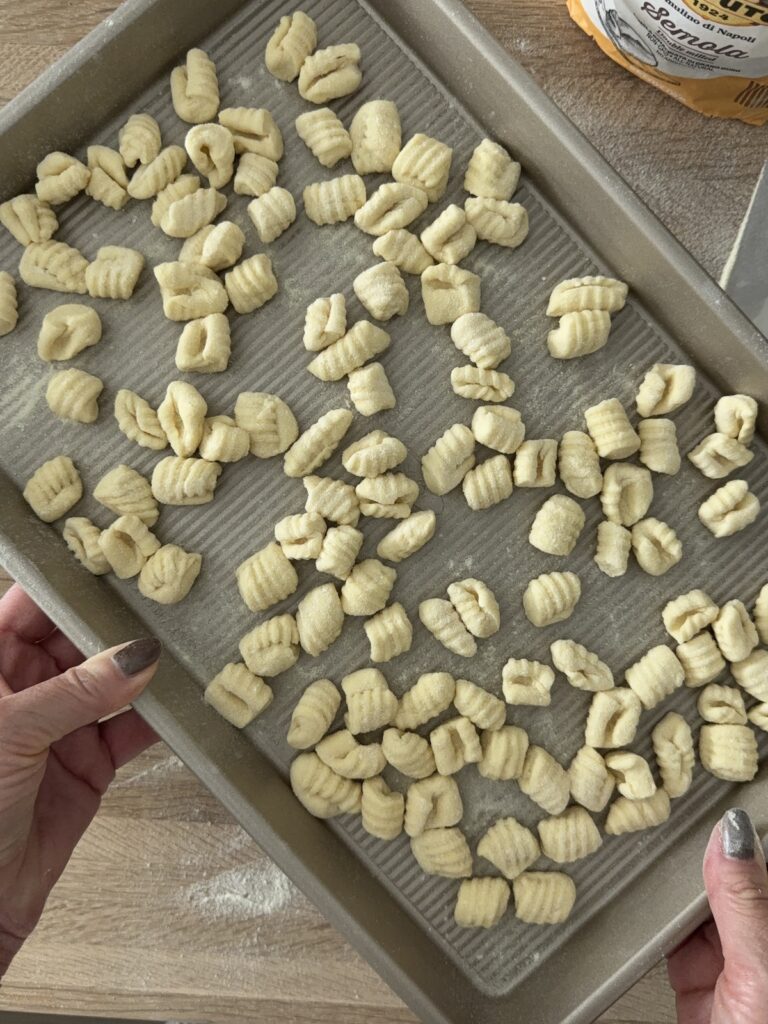

Expert Tips
- Expect it to look shaggy at first. Don’t panic if the dough looks dry or crumbly in the beginning — that’s completely normal. Semolina hydrates slowly, and the dough will smooth out as you knead.
- Add water slowly. Be patient and avoid adding extra water too early. If after several minutes of kneading it still feels crumbly, add water a teaspoon at a time.
- Wet your fingertips for easy kneading. Lightly wet your fingertips with water while kneading if the dough feels just a little too dry. This introduces moisture gradually without over-hydrating.
- Always add the ricotta. After testing several batches both with and without ricotta, I can confidently say the ricotta-enriched version is easier to knead and gives the pasta a softer, more balanced texture. The 100% semolina dough is very chewy and much harder to work with.
- Keep it covered. Always keep unused dough wrapped in plastic while you roll and shape to prevent drying.
- Let the dough rest the full amount of time. Don’t skip the 30-minute rest — it relaxes the gluten and makes shaping easier.
Storage and Freezing
If you’re making the dough ahead of time, wrap it tightly in plastic wrap and refrigerate for up to 24 hours. Let it come back to room temperature before rolling and shaping.
Once shaped, spread the cavatelli on a tray dusted with semolina. Refrigerate uncovered for a few hours or freeze in a single layer until solid, then transfer to a bag or container. Cook directly from frozen (no thawing needed) — they’ll be ready in 4–5 minutes.
Serving & Using Semolina Pasta Dough
This dough makes beautiful cavatelli, small ridged shells that hold onto any sauce perfectly. It’s the shape I usually make at home, and it’s fun to roll and shape by hand.
You can also use this dough for other traditional shapes like orecchiette (“little ears”) or strozzapreti (a twisted pasta from central Italy). I’ve made orecchiette and strozzapreti in Italy, but at home I usually stick with cavatelli since it’s the easiest and most fun to shape.
Sauce Pairings:
- Chicken Bolognese
- Spaghetti with Lemon Cream Sauce
- Pesto Genovese
- Tomato Pomodoro
- Cacio e Pepe
Helpful Tools:
- A cavatelli board to create ridges that catch the sauce.
- A bench scraper for cutting and moving dough.
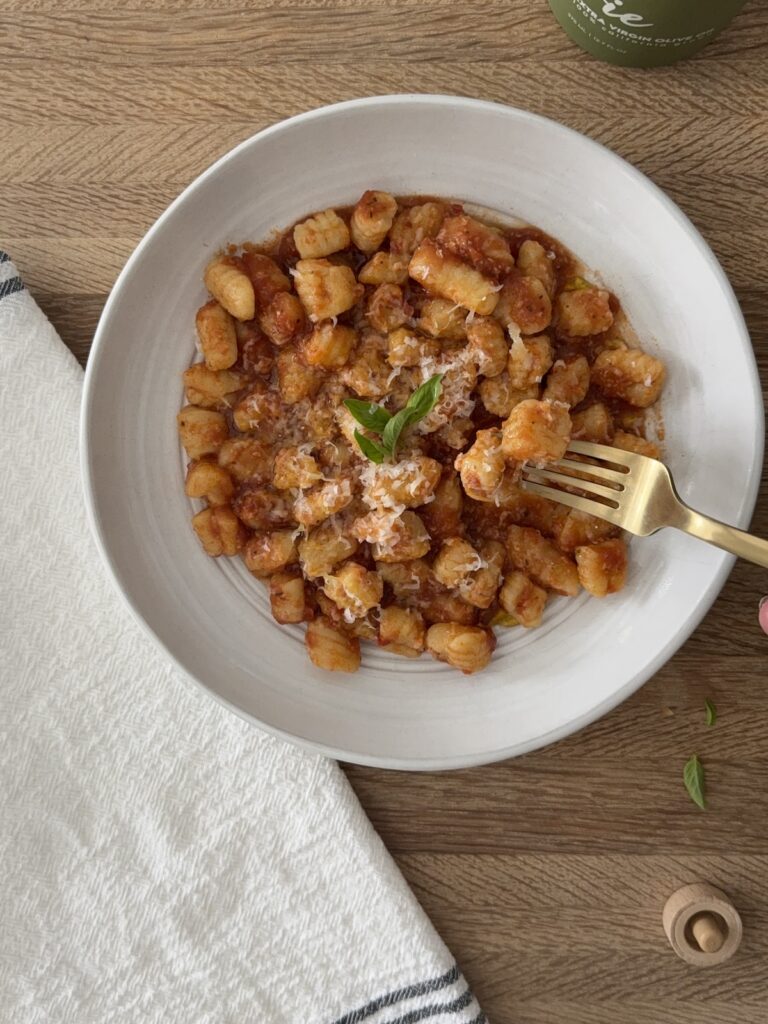
FAQs
Yes, but the results are very different. Semolina is made from durum wheat and gives pasta a firmer bite and rustic texture, while all-purpose flour makes a softer, smoother dough. For traditional southern Italian shapes like cavatelli or orecchiette, semolina is the preferred flour.
It depends on the recipe. Some cooks use a 50/50 mix for balance — semolina adds texture while 00 flour keeps the dough silky. My recipe is made with 100% semolina (plus a touch of ricotta), so it’s best for rustic shapes.
Semolina has a coarser grind and higher protein, which gives pasta structure and a pleasant chew. It also holds sauce especially well. 00 flour, by contrast, is very finely milled and creates delicate egg-based pastas like tagliatelle or fettuccine.
Egg doughs (often made with 00 flour and eggs) are soft, silky, and best for rolled and cut shapes like tagliatelle, ravioli, or lasagna. Semolina dough (made with semolina flour and water, sometimes with a little ricotta) is firmer, chewier, and best for hand-shaped pastas like cavatelli or orecchiette.
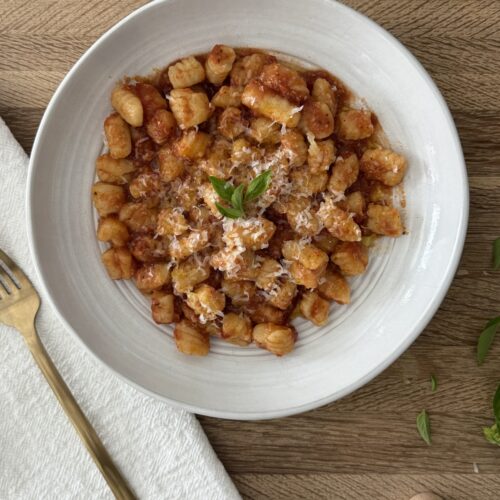
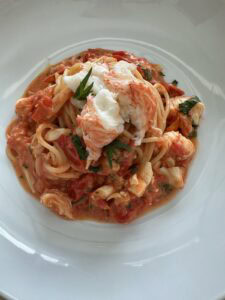
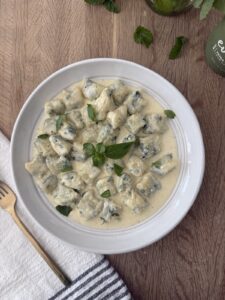
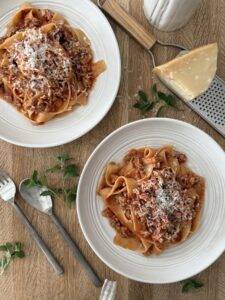
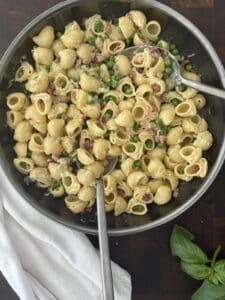
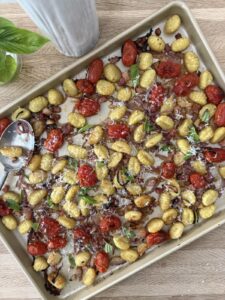
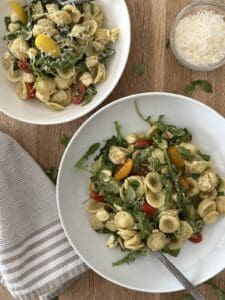
Thank you so much for this recipe. I haven’t made it yet, but you inspired me to make it this weekend. Where do I get the board for the pasta?
Margaret McClellan ☺️.
That’s amazing — I love hearing that this inspired you! It’s called a gnocchi board, and you can find a similar one on Amazon. Stores like Williams Sonoma and Sur La Table usually carry them as well. I don’t have a link to the exact one I use, but I’m pretty sure mine was from Williams Sonoma. Please let us know if you have any more questions! Jenn